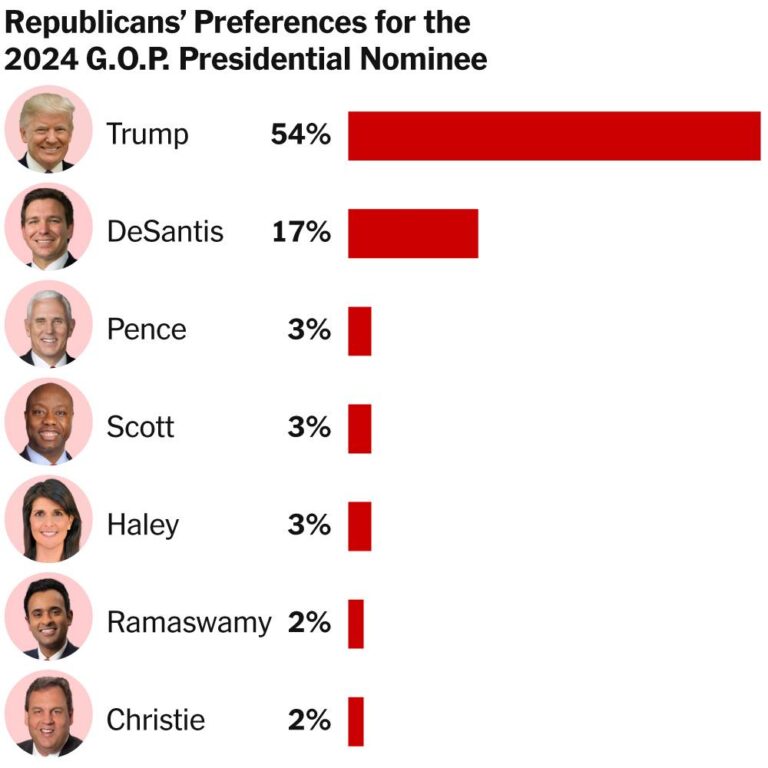As the 2024 election cycle heats up, a growing number of Republican candidates have voiced support for a bold and controversial proposal: eliminating the U.S. Department of Education. Advocates argue that dismantling the federal agency would return control of schooling to states and local communities, reduce bureaucracy, and cut government spending. Critics warn that such a move could disrupt funding streams, widen educational disparities, and undermine national standards. This article explores what abolishing the Education Department would entail, the political motivations behind the push, and the potential consequences for students, educators, and policymakers nationwide.
Republican Vision for Abolishing the Education Department and Its Policy Implications
The Republican proposition to dismantle the U.S. Department of Education foregrounds a broader shift towards decentralizing educational governance. Proponents argue this move would restore authority to local and state entities, thereby fostering innovation and tailoring educational practices to community needs. This vision emphasizes reducing federal oversight and reallocating funds directly to schools and districts, removing what critics consider bureaucratic red tape. Key policy implications include:
- Funding Redistribution: Direct allocation of federal dollars to state governments without strings attached.
- Curriculum Autonomy: States gain full control without mandated federal core standards.
- Accountability Shift: Local school boards responsible for performance metrics, potentially varying widely across regions.
While supporters highlight enhanced local control, opponents warn this could exacerbate educational inequality, particularly in under-resourced areas. Without a centralized department to ensure minimum standards, disparities might widen, affecting millions of students nationwide. States with less capacity or funding could struggle to sustain critical programs, including special education and English language learning. The following table contrasts projected effects on key educational areas:
| Educational Aspect | Current Federal Role | Potential Impact Post-Abolishment |
|---|---|---|
| Funding Oversight | Distributes and monitors grants | States manage allocation, risk of uneven distribution |
| Standardized Testing | Sets baseline assessment guidance | Varied or absent testing mandates |
| Equity Enforcement | Enforces civil rights in schools | Potential reduction in oversight, increased disparities |
Potential Impact on Federal Education Funding and State Control
The proposed elimination of the U.S. Department of Education signifies a seismic shift in how federal education funding is allocated and managed. Without a centralized agency, the federal government’s direct involvement in education policy would drastically reduce, potentially ending nationwide programs like Title I funding and Pell Grants. This reallocation could transfer billions in federal dollars directly to states, requiring them to devise their own systems for distributing aid to schools. Proponents argue this would foster innovation and tailor education to local needs, while critics warn of increased disparities as states vary widely in resources and policy priorities.
Key potential consequences include:
- A patchwork of education standards, with some states advancing curriculum innovations and others possibly rolling back protections for marginalized students.
- The challenge of ensuring equal access to quality education, as states with fewer resources might struggle to maintain funding levels previously supported federally.
- The possibility of reduced accountability mechanisms, complicating efforts to track outcomes and equity nationwide.
| Aspect | Current Federal Role | Post-Elimination Scenario |
|---|---|---|
| Funding Distribution | Direct allocation to states and programs | States receive block grants to allocate |
| Accountability | National standardized testing and reporting | State-determined metrics and transparency levels |
| Equity Programs | Federal mandates for underserved communities | Varied state priorities, potential gaps |
Challenges and Criticisms Facing the Proposal from Educators and Lawmakers
Educators and lawmakers have expressed deep concerns over the proposed elimination of the U.S. Department of Education, highlighting the potential disruption to critical national education standards and funding. Critics argue that dissolving the department could lead to a fragmented system where states assume full control with uneven capabilities and resources, ultimately exacerbating educational inequalities across the country. Many also fear the loss of federal oversight might weaken protections for disadvantaged students, including those with disabilities and English language learners.
Lawmakers opposing the proposal point to practical issues surrounding the transition of responsibilities to states and local districts. They emphasize risks such as:
- Confusion and delays in disbursing federal education grants
- Loss of streamlined accountability measures on educational outcomes
- Potential gaps in enforcement of civil rights laws within schools
| Concern | Potential Impact |
|---|---|
| Funding Disruptions | Delayed payments to schools |
| Accountability | Reduced oversight on school performance |
| Civil Rights Enforcement | Uneven protections for marginalized students |
Strategies for Transition and Recommendations for Maintaining Educational Standards
In the wake of a potential dismantling of the U.S. Department of Education, states and school districts would face the critical challenge of absorbing regulatory and funding responsibilities. Transition strategies must prioritize clear communication channels between federal, state, and local authorities to ensure continuity of educational services. Policymakers recommend establishing centralized state bodies dedicated to managing grants, compliance, and data collection to replace existing federal mechanisms. This decentralization calls for increased investment in local administrative capacity and a robust framework for accountability to prevent disparities in educational quality across regions.
Recommendations for maintaining educational standards include:
- Implementing standardized state-led assessments aligned with national benchmarks to ensure uniformity in student achievement measurement.
- Encouraging collaboration between states to share best practices and resources, mitigating the risk of uneven policy application.
- Protecting funding streams with legislative safeguards to prevent drastic cuts during political shifts.
- Enhancing transparency through publicly accessible educational performance data and stakeholder engagement initiatives.
| Focus Area | Potential Transition Solution | Key Benefit |
|---|---|---|
| Funding Distribution | State-administered block grants | Increased flexibility and local control |
| Accountability | State education boards with federal advisory oversight | Preservation of rigorous standards with local input |
| Data & Reporting | Centralized state databases with public dashboards | Transparency and informed policymaking |
In Conclusion
As the 2024 election cycle unfolds, the push by some Republican candidates to eliminate the Department of Education marks a significant flashpoint in the ongoing debate over federal involvement in education. While supporters argue that dismantling the department would return power to states and localities, critics warn of potential disruptions to funding, oversight, and equity in schools nationwide. The implications of such a policy shift would reverberate through classrooms, communities, and the broader education system, making it a critical issue for voters and policymakers to watch closely.







